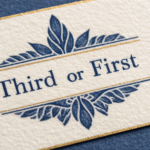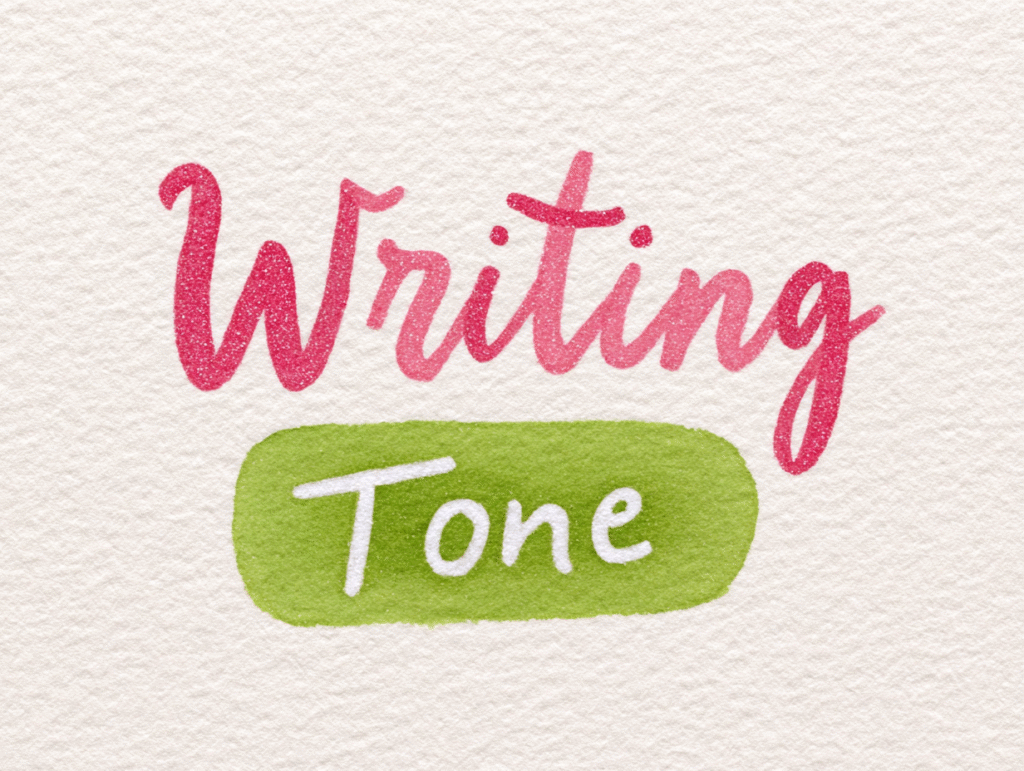Dialogue is of course extremely important when it comes to writing in fiction. It moves the plot forward and builds up tension in the story, but it also serves as a sort of mirror that reflects just what’s going on inside the minds of the characters. By carefully choosing the words they speak, and the way they speak (accents ect), the silences they hold, awkward or otherwise, and things as simple as just the rhythm of their speech, you can bring your characters to life. You want subtext, motivation and personality to reveal who your character truly is.
Lets take a look at how dialogue is used by famous authors like Jane Austen, Charles Dickens, Zadie Smith, and Kazuo Ishiguro. Looking specifically at tone, pacing, subtext and conflict, and how they all blend together to creative a real and inspiring character.
The Voice Behind the Words
All of us humans have our own unique voice, and so as you’d imagine any fictional character without a unique voice is going to turn out pretty bland. A voice is shaped by things such as a person’s background, education, region, age, class and personality and a convincing voice can make your characters feel authentic. When done well it’s possible to figure out what character is talking without even saying their dialogue tag!
So let’s take a little look at this line by character Eliza Doolittle in George Bernard Shaw’s Pygmalion. Here we get to see her distinctive Cockney accent and mangled grammar. This immediately shows the reader what Eliza’s social class, education level and cultural background are, or at least gives them a first impression of it. It sets the imagination going, and leads the reader into wanting to know more about the character and see if their first impressions were correct.
“Nah then, Freddy: look wh’ y’ gowin, deah.”
The reader will see that Eliza’s manner of speaking is completely different to Professor Henry Higgins’, he speaks with an educated voice, which shows off his upper-class background and intellectual status. This is not just for comic effect, no, it is central to the play’s exploration of classes and class identity. And as Eliza learns to speak ‘properly’, her speech changes. Eliza’s difficult journey to find her own voice becomes a pivotal part of her character development.
Next lets take a look at Jane Austen, who though writing without the regional inflections that are later seen in her literature, still managed to distinguish her characters using style and tone. Mr Collins in Pride and Prejudice is verbose, self-important and obsequious:
“My reasons for marrying are, first, that I think it a right thing for every clergyman in easy circumstances (like myself) to set the example of matrimony in his parish.”
His dialogue is stilted and pompous compared with Elizabeth Bennet’s quick wit and consistent scepticism. Without having to describe Mr Collins at length, Austen shows off his character using words that display his foolishness.
Subtext: What Is Not Said
Dialogue can be used, or rather, not used to show character too. By artfully saying nothing. Fictional characters just like people often have reasons for hiding how they truly feel inside. They can do this by maybe lying, avoiding a question, beating around the bush or using irony and this is where subtext becomes crucial.
Harold Pinter, one of Britain’s greatest playwrights is known for his “Pinteresque” dialogue, which is marked by many pauses and predictableness. In The Dumb Waiter, we see two hitmen engage in trivial banter despite their growing tension and psychological strain. Their words are often at odds with the heaviness of the actual situation going on around them, and this then reveals their character through absence, hesitation and deflection.
In Never Let Me Go by Kazuo Ishiguro, the characters hardly ever speak directly about their fate as clones raised for organ donation. Their conversations are mundane and this very restraint reveals their passivity, their longing to be normal and their deep inner trauma.
“I keep thinking about this river somewhere, with the water moving really fast. And these two people in the water, trying to hold on to each other…”
This metaphor captures Kathy’s emotional world far more poignantly. The pain is in what is not said rather than what is.
Conflict and Power Dynamics
So if conflict is the engine of story then the dialogue is its spark and through spoken exchanges between characters, the readers can see how characters relate to each other, they can see just who holds all the power, and then of course, they’ll see how that balance shifts.
In Zadie Smith’s White Teeth, the clash of cultures, generations and identities is very clear just through dialogue alone. When Samad Iqbal who is a Bangladeshi immigrant argues with his English friend Archie Jones, their conversations show off their very different cultural values.
“You Englishmen are obsessed with these things,” Samad snapped. “Freedom, choice, the liberty of the individual. It’s all nonsense!”
Samad’s frustration reveals his cultural displacement and also his anxiety about how his children may or may not integrate well into Western society. Smith uses dialogue to show off these tensions to the reader but without explicitly analysing them because the characters’ arguments are the analysis.
Of course we must take a quick look at Shakespeare! His dialogue is also used to express the struggle for dominance. For example in Othello, Iago’s subtle manipulation is shown in his choice of words. He doesn’t really states anything outright does he? Instead we see him planting seeds of doubt through questions and suggestions:
“O, beware, my lord, of jealousy;
It is the green-eyed monster which doth mock
The meat it feeds on.”
Here he has disguised a warning as concern which reveals Iago’s cunningness but also at the same time it exposes his insecurities.
Pacing and Rhythm
Pacing speak volumes about a character. For example short, sharp exchanges suggest anxiety, aggression or urgency whereas long, meandering sentences indicate nervousness, soul-searching or even pomposity.
In A Clockwork Orange by Anthony Burgess, the protagonist called Alex uses a rhythmic, inventive slang called Nadsat which is erratic, musical and menacing all at the same time.
“What’s it going to be then, eh?”
This is a recurring question and it is pretty ambiguous, highlighting Alex’s unreliable moral compass and of course the novel’s theme of free will. His speech throughout is both violent yet strangely poetic at the same time, which immerses you into his world completely.
But right at the other end of the spectrum let’s consider the calm and purposeful speech of character Jeeves in P. G. Wodehouse’s novels:
“If I might make the suggestion, sir, a quiet word in Miss Hopwood’s ear might produce results of a gratifying nature.”
Jeeves’s speaks in this sort of restrained manner used to portray his intelligence, and the subtle control that he has over the bumbling character of Bertie Wooster. Wodehouse uses this disparity between Jeeves’s precision and Bertie’s blunders to define both characters in a quite clear way.
Silence and Its Meaning
Sometimes what a character does not say is way more powerful than anything that they could have said. In real life scenarios, silence can mean agreement, fear, defiance, confusion or guilt amongst other things and in fiction pauses like this can have a strong effect.
In Ian McEwan’s Atonement, the character of Robbie is wrongfully accused of a crime and during a pivotal moment, he and Cecilia meet back up again after being apart for years. Their dialogue is sparse, signifying the unspoken history between them. The silences are eloquent and the reader senses their pain, loss and fragile hope in the empty space between their few words.
“Come back,” she said.
That simple line, and his silent response, gives a stronger sense of the complexity of their relationship much more effectively than pages and pages of internal monologue ever could.
Dialect and Authenticity
Writing dialogue in dialect can be a powerful way to give a character authenticity and ground them in a particular region or culture. However make sure to always handle it sensitively because you of course want to avoid any stereotyping that might alienate readers.
Mark Twain, though American, offers us a good example. His characters in The Adventures of Huckleberry Finn speak in distinct Southern dialects to show off their class, race and education. Huck’s narration is full of colloquial language.
Irvine Welsh’s Trainspotting famously employs Scots dialect, phonetically rendered:
“Ah choose no tae choose life. Ah choose somethin else.”
The raw impact of the language is fantastic and immerses the reader completely with dialogue that is inseparable from the character’s identity and their view of the world from their unique perspective.
The Ethics of Dialogue
Take in to account that you have to navigate ethical considerations when crafting dialogue. Authenticity is important, but so is respect. Realistic dialogue should not resort to caricature or rely on cliché.
Chimamanda Ngozi Adichie talks about “the danger of a single story”, and the idea that a narrow or simplified portrayal can do harm, always do your research. This is especially relevant when writing characters from cultures that are not your own. Make sure all dialogue is rooted in empathy, research and understanding.
Zadie Smith, for instance, brings awareness and appreciation to her work. In NW, characters of Jamaican, Nigerian, Irish and English descent all speak differently and not just in accent but in rhythm, vocabulary and cultural references too. The fact that Smith listens deeply to real people really shows.
Tips for Writers
- Read Dialogue Aloud: If it sounds artificial then it probably is.
- Listen to Real Conversations: Study how people speak, how they interrupt each other, and how they contradict themselves.
- Cut the Fat: In real life dialogue is a mess, but written dialogue has to be purposeful and every line should try to reveal something.
- Use Dialogue Tags Sparingly: “Said” is often enough. Don’t over do it, just let the words and context convey the emotion.
- Avoid Exposition in Dialogue: Characters should not tell each other things they already know as it sounds unnatural and is boring for the reader.
- Let Characters Lie: Truth is that people lie! So use this truth to add depth to your characters.
Conclusion
So to wrap it all up dialogue is more than a record of speech, it’s not just he said this, and she said that. No, it’s a revelation of the human psyche, a looking glass into a characters soul, a magnifying glass giving a close up look into the truth of human nature. It brings characters into focus, it lays bare their desires whether good or bad, highlights their fears and contradictions, and allows readers to discover who they are not through description but through interaction instead.
The best dialogue doesn’t tell us who a character is but it lets the character show us who THEY are! From the elegance of Austen, the subtlety of Ishiguro, or the raw impact of Welsh, we see that the power of dialogue lies in its ability to evoke flawed, real and vibrant life.
A writer should master character dialogue not through a set of tricks but by listening to the real world. As Zadie Smith once put it, “To speak for another person is to do more than borrow their voice. It is to carry their story with care.”






